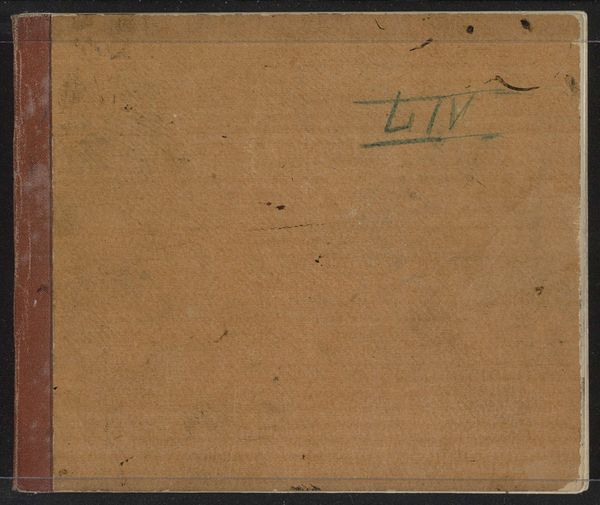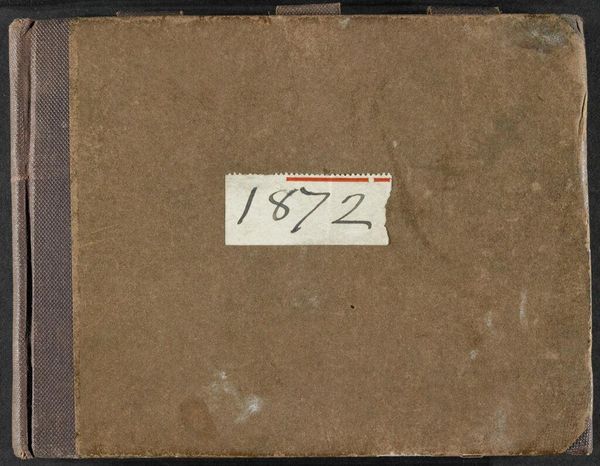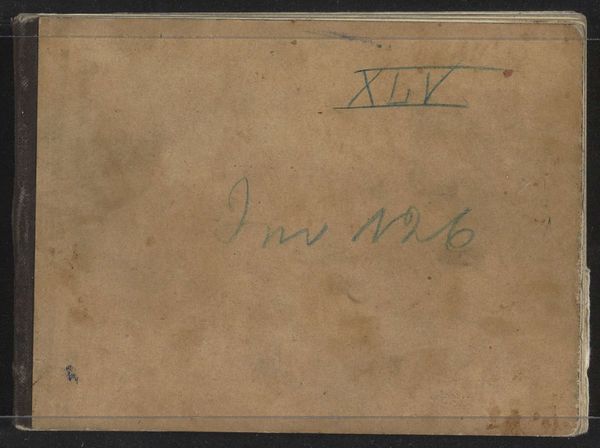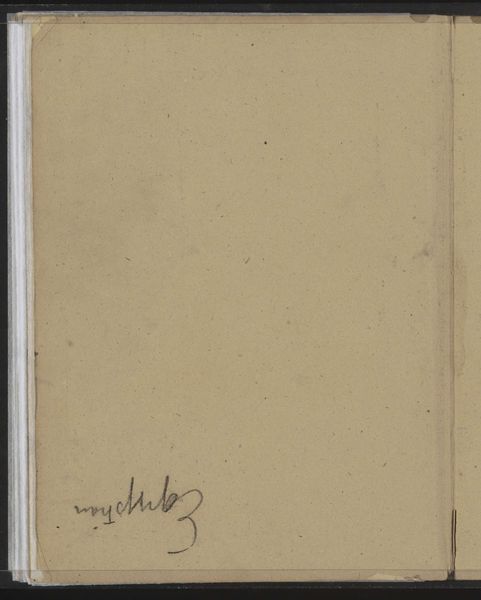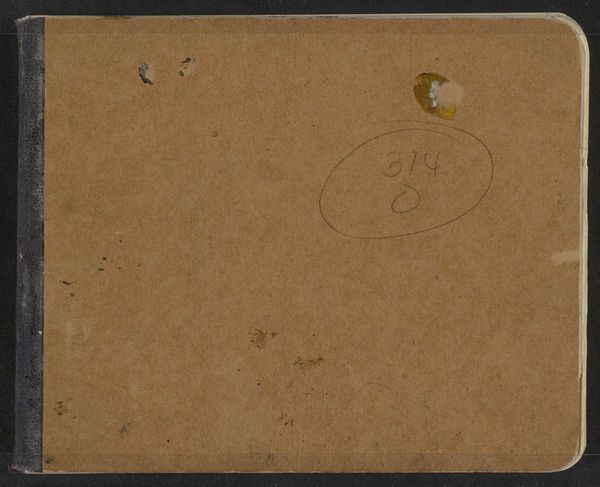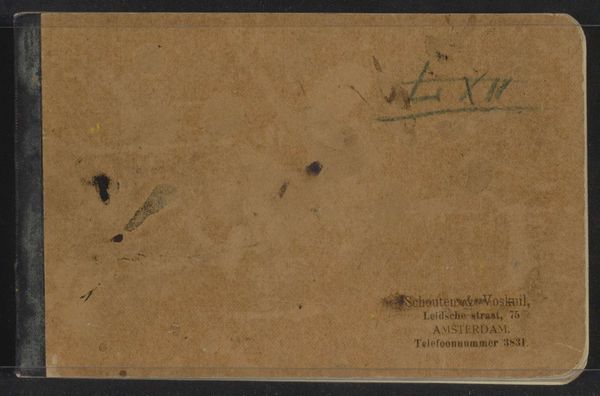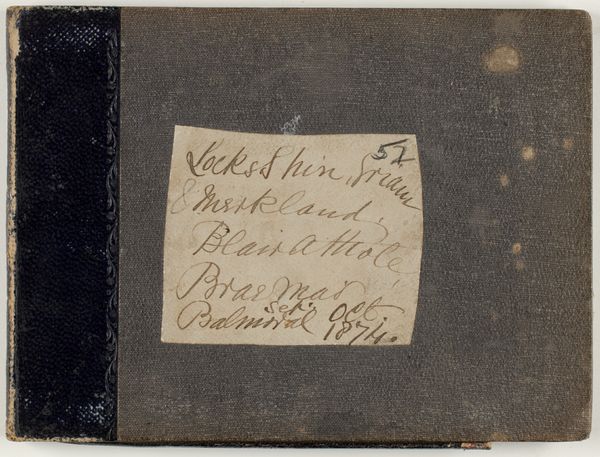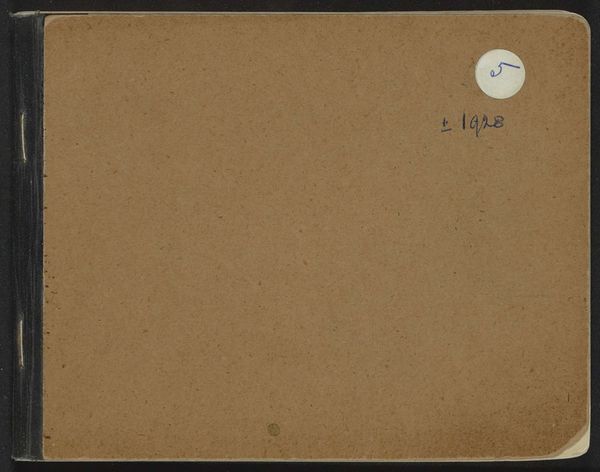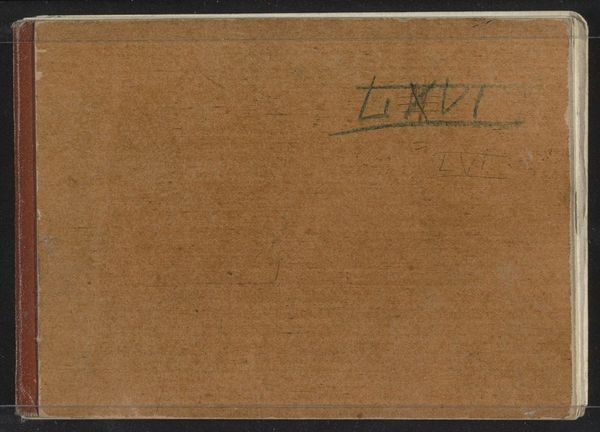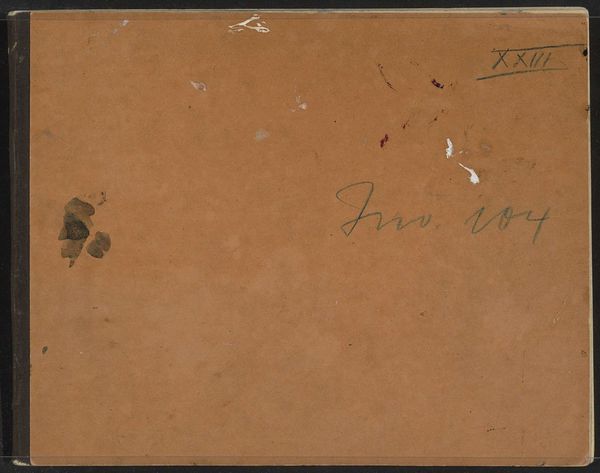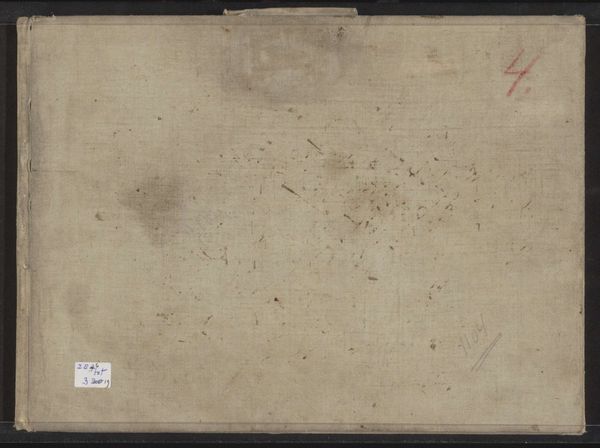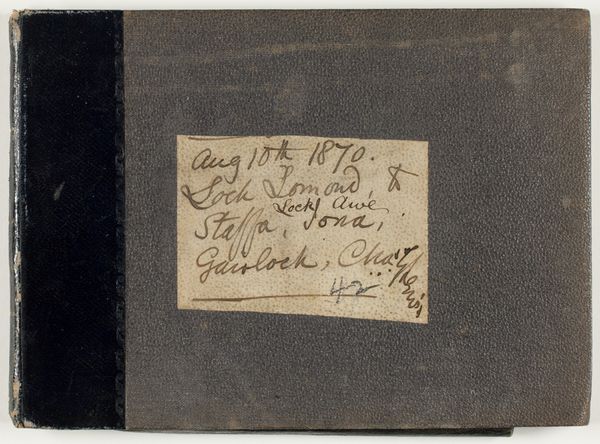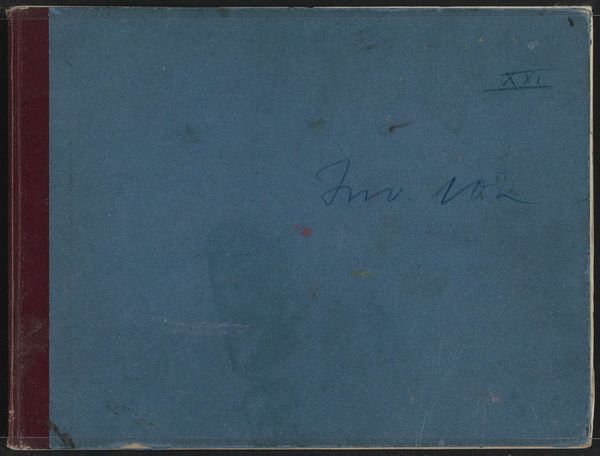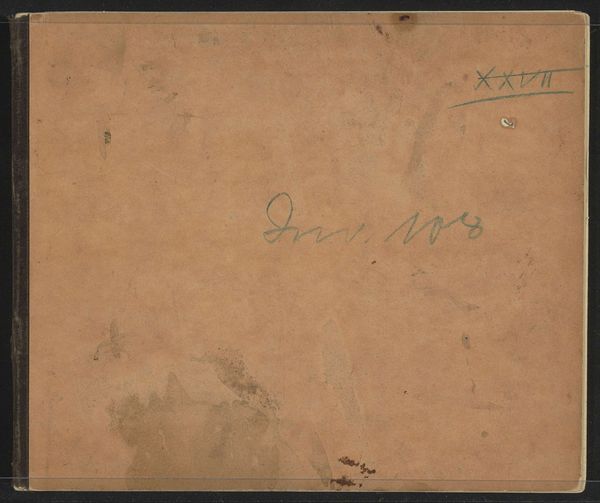
Dimensions: height 115 mm, width 160 mm, thickness 10 mm, width 321 mm
Copyright: Rijks Museum: Open Domain
Curator: Welcome! Today, we’ll be looking at a mixed-media drawing on paper, “Schetsboek met 27 bladen,” which translates to “Sketchbook with 27 Pages” by Johanna van de Kamer. The artwork dates from 1883 to 1922. Editor: My first thought is "well-worn". You can tell it's seen a lot of use just from the smudges and faded cover. It suggests a very intimate relationship between the artist and this object. Curator: Absolutely. Sketchbooks are inherently personal. They give us a glimpse into the artist’s mind, their process of experimentation and their everyday observations, away from the pressure of creating formal artworks for the public eye. They have that aura about them. Editor: And think about the materiality: the paper itself, its quality, the type of binding – these details shaped what kind of work the artist could even create. Was this expensive paper or something readily available? Curator: That's a key point. Paper production became more industrialized during this period, making it more accessible. This also reflects how Impressionism, with its focus on everyday life, shifted artistic production toward the readily available, challenging the hierarchy of materials and subject matter that the Academy promoted. The cover’s graphic design speaks to that standardization, but with a slight artisanal flair to differentiate the specific producer. Editor: Exactly. Plus, thinking about Johanna van de Kamer's role, where and how did she get the resources to even produce her art? That's shaped by her economic and social position. Also, the visible stains, and scuffs tell a story of studio practices and artistic labour that smooth, clean artwork tends to hide. Curator: The creation of the Impressionist style coincides with these changes. Artists increasingly went outside of formal studio settings and documented ordinary citizens at leisure. What tools were accessible helped decide not only their subjects, but how they were framed and their availability for a broader market. Editor: Precisely. We can understand so much more about its significance once we consider those connections to production, accessibility, and its social impact. Curator: Indeed, examining “Schetsboek met 27 bladen” through both material and historical lenses opens up fascinating avenues for understanding not just Johanna van de Kamer’s artistic practice, but the broader cultural and economic landscape in which it was embedded. Editor: I’ll walk away considering that any artwork has an interesting tale about the artistic life and practices to tell us beyond the visual aspect.
Comments
No comments
Be the first to comment and join the conversation on the ultimate creative platform.
